Welcome to the Unusual Sport of Burro Racing
We sent our writer to train for and compete in a historic donkey race.
My Jeep hangs at 45 degrees and creaks on its hinges on a steep pitch of road edging on a cliff. Jefferson Airplane’s “White Rabbit” blasts from my stereo… Go ask Alice, When she’s ten feet tall… I take my chances, pop the gear into first and floor it as I turn the wheel right up the slope. The Jeep moves just enough to hook the back tire on a rock and prevent it from flipping. I jump out of its yellow door and start running as fast as possible straight down the steep hill to look for help.
And if you go chasing rabbits
And you know you’re going to fall
I reach the first portal into civilization—a museum in a cave—and run straight through the doors breathless and sweating. “Can I help you?” asks an old man with peppered hair and a pack of cigarettes in his breast pocket. I explain the situation and within minutes I’m sitting in Bud’s Subaru on the way to rescue my Jeep. “Girl, that happened to me once on Black Pitch,” says Bud of this nasty stretch of road, worthy of its name. “I had to change my pants afterwards. It’s a right of passage around here.”
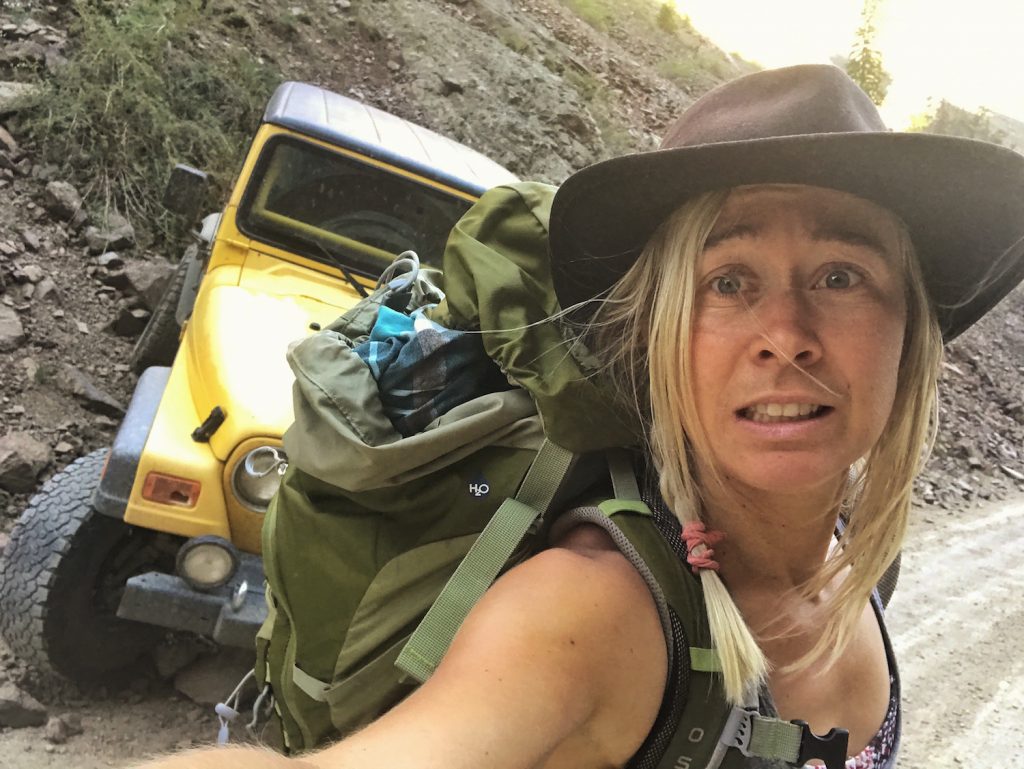
Photo: Morgan Sjogren
My plan had been to preview the course of the Inaugural 10 Mile Creede Donkey Dash, which I’ll be running tomorrow with my partner, a burro named Alice. It’s held on a 4×4 loop known as “The Bachelor,” in Creede, Colorado, a town with a population of less than 300. But I’ve long forgotten my strategy scoping as I stare at the Jeep I live in, now tilted dangerously off the road.
Burro Racing 101
A donkey race is a running event (typically 5 to 29 miles long) in which entrants must be paired with (and run alongside) a donkey on a harness. They must stay together and “attached” at all times during the race.
There are actually more rules for racing with a donkey than a typical road race. For example: You are allowed to smack your donkey’s bum, but you cannot smack another racer’s burro. Also, you are not allowed to ride your burro at any point during the race.
There are two legends behind the sport: According to the Western Pack Burro Ass-ociation (WPBA), 19th-century miners used donkeys to carry mining tools and supplies through the Rocky Mountains as they mined for minerals like gold and silver. Since the burros were carrying a lot of weight, the miners had to walk. When two miners found gold in the same location, they raced back to town to claim their find first. “Neither could ride their animal because of its load,” reads the WPBA website, “so one of the basic rules of burro racing was established.” There is also a legend that two 19th–century miners thought up donkey racing during a late night bet at a bar. They were seeking an “easier” way to make some money, using the donkeys that they were teamed with for work at the mines. Today, runners suffer through up to 30 miles of mountain terrain with their burros, and it certainly doesn’t feel like the “easy way out.”
According to the WBPA website, “The word burro comes from the Spanish word meaning donkey. A donkey is defined as being an ass. They have chestnuts on the forelegs only, while other animals of the same species, such as mules or horses, have them on hind and forelegs. The tail has no hair, except on its lower part, which has a brush.”
Athletes can either breed and train their own donkey from birth or rent one on event day from a burro ranch like Laughing Valley Ranch. If you rent a donkey, a portion of your prize money winnings go back to the donkey because you both did the work to earn it.
Pre-race training sessions (highly recommended) can be arranged off site in advance or at the event the night before a race. Sessions include getting acquainted with, how to talk to, how to handle, running with, getting pulled by and brushing and saddling your burro.
“Hup Hup!” “Hah hah!” Your burro will answer to both of these phrases. Event directors say the mentality of donkeys fall between children and teenagers—sometimes they need to be talked to with a tone of sweetness and other times, stern tough love.
Donkeys are notoriously stubborn. Bring along carrots, sugar cubes and banana peels for when your burro wants to stop. A little sweet encouragement goes a long way. Burros also respond well to physical stimulus such as smacking their rear or grabbing them by the harness for direction. They have super thick skin so this will not hurt or harm them.
No. Donkeys are very active animals (their mating rituals even involve running), and they are hearty, built to withstand heavy loads, harsh conditions and long distances, according to the WBPA.
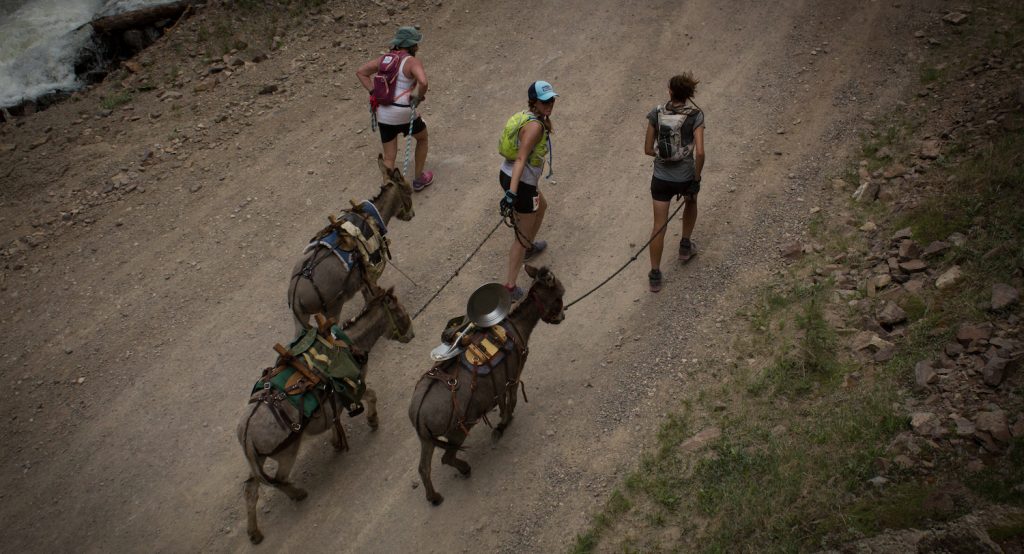
Photo: Michael Mewes
I park the Jeep a few blocks into town and walk into the bar. I order a beer, sit down and chug it. The bartender asks if I’d like another, but I ask him to hold off while I run to my car to change out of my black running shorts and “Yoga Butt” tank.
I sprint back two minutes later, dressed the part for this southern Colorado town in a red dress and leather ankle boots, a bandana tied around my neck and a felt-brimmed black hat on my head. I walk back to the counter and he pours me a beer as he asks, “Are you going to tell us why you’re here?”
I take a swig. “Well I’m in Creede to race with an ass in the mountains tomorrow and write a story about it. But I’m here in this bar because I almost died today.” I officially have a captive audience looking down at me across the bar counter.
“Do it for the story. Celebrate being alive.”
Soon, Kay, the woman who put me up in a beautiful condo overlooking the Rio Grande, walks in and takes a seat next to me at the bar. I explain to her, and everyone else, what happened to the Jeep. Kay looks me over and encourages me to have another beer despite the impending donkey race. “Do it for the story. Celebrate being alive,” says Kay, who explains that there’s no need to drive back to the condo, which is about 20 minutes away. “Stay in Creede. Listen to the band, party with us and just crash in the park.”
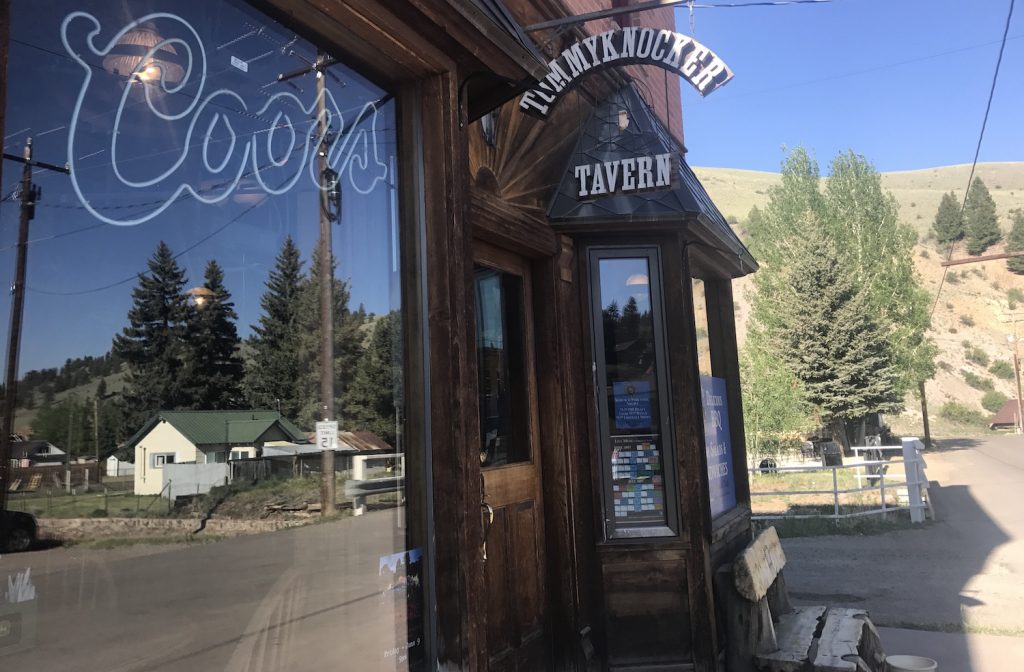
Photo: Morgan Sjogren
Typically I go to bed early, hydrate and rest my legs the night before a race to ensure I’m ready to push my body to its limits—a quest of intensity that, for this event, began about 12 hours early as I danced through the night.
I decide to stick with tradition and take the shot of whiskey I’m offered at 2 a.m.
After a few sets, the singer—a man with dirty blonde untamed curls, a caterpillar mustache and fingers bedazzled in turquoise rings—sits down to join me. As an offering, he pours half of his beer into my plastic water glass and asks, “How does one prepare their ass to race with an ass?”
Just like this, according to the Western Pack Burro Ass-ociation. Legend has it that donkey racing began when drunken miners in a Leadville, Colorado, bar came up with the challenge to race burros. I decide to stick with tradition and take the shot of whiskey I’m offered at 2 a.m.
The race doesn’t start until 1 p.m., so I wander into the woods with a couple of my new friends and camp in an aspen grove. Sitting on the warm Jeep hood, we trade stories about life on the road under the full moon before drifting off far too late to rest up for tomorrow’s burro race.
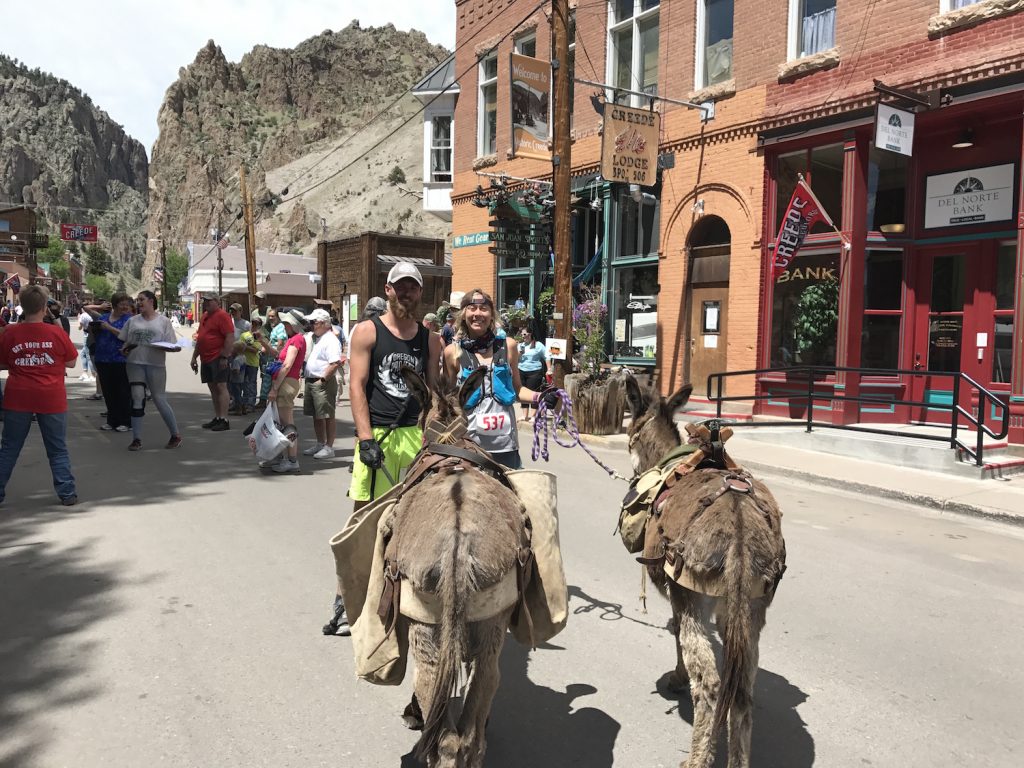
Photo: Morgan Sjogren
Creede’s Main Street was blocked off ahead of the race and festivities for the mining town’s 125th anniversary. I walk down the main drag as the rambunctious locals I met last night cheer me on, “Yeah, Mo. This race is yours to win, cowgirl!” This, along with several cups of coffee, helps me overcome the general malaise incurred from last night. I strap on my Salomon hydration holster to lock and load with some Gu Hydration Drink Mix in my breast pocket bladders.
It’s time to go, and I finally start to get nervous. Alice will not move. I tug at her before practically pushing her through the herd and to the front line. I’m hoping for the best but expecting disaster.
His donkey, Smokey, is in love with Alice and follows closely as we make our way up the relentless five-mile climb.
The gun goes off and the stampede begins to move. Sneakers and hooves pound the ground in unison. I sprint to the front with Alice, who’s capable of running a 5-minute mile, uphill, at 9,000 feet elevation. Even on my best days, that’s not an easy task for me.
It’s 90 degrees and the sun is beating down. Less than 1 mile in, I’m already feeling dead legged and dehydrated. Neil, a tall bearded runner, trails closely behind Alice and me. His donkey, Smokey, is in love with Alice and follows as we make our way up the relentless 5-mile climb.
The four men just ahead of us seem like the most formidable opponents but show weakness when their burros come to complete stops at stream crossings and steep sections. One even tries to buck his handler.
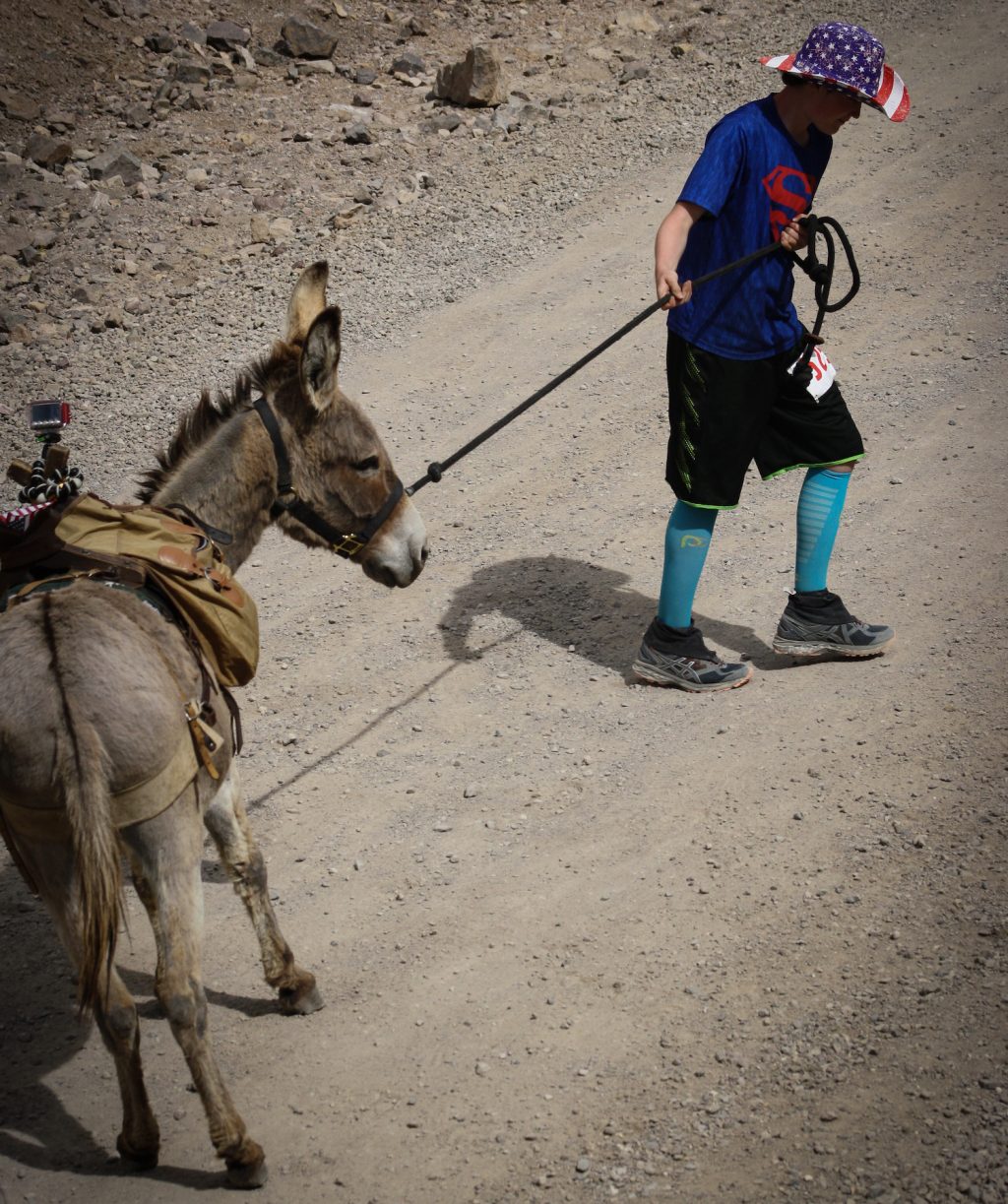
Photo: Jennifer Mewes
Alice stays in high gear with very little prodding from me outside of gentle smacks and friendly encouragement: “Hup! Hup! Yeah, Alice!” Smokey keeps pace in the rear and Neil tosses me handy tips from behind, like wrapping Alice’s rope around myself so she can literally help haul me up the trail.
We discover Chris is “donkey dynasty.”
As the two of us prance over the rocky grade, I look out over the ridgeline into the lush green mountain skyline encapsulating the Continental Divide. Neil and I let the two burro-racing pros, wearing harnesses around their waists, take off ahead of us. The veterans have a strategy and quickly move out of our line of sight as fellow racer Chris Westerman falls in line with us. We discover Chris is “donkey dynasty”: His grandparents met and fell in love at a donkey race in the 1940s. We get to know each other between breathless bouts of climbing and mentally prepare for the technically challenging downhill stretch we’ll soon face.
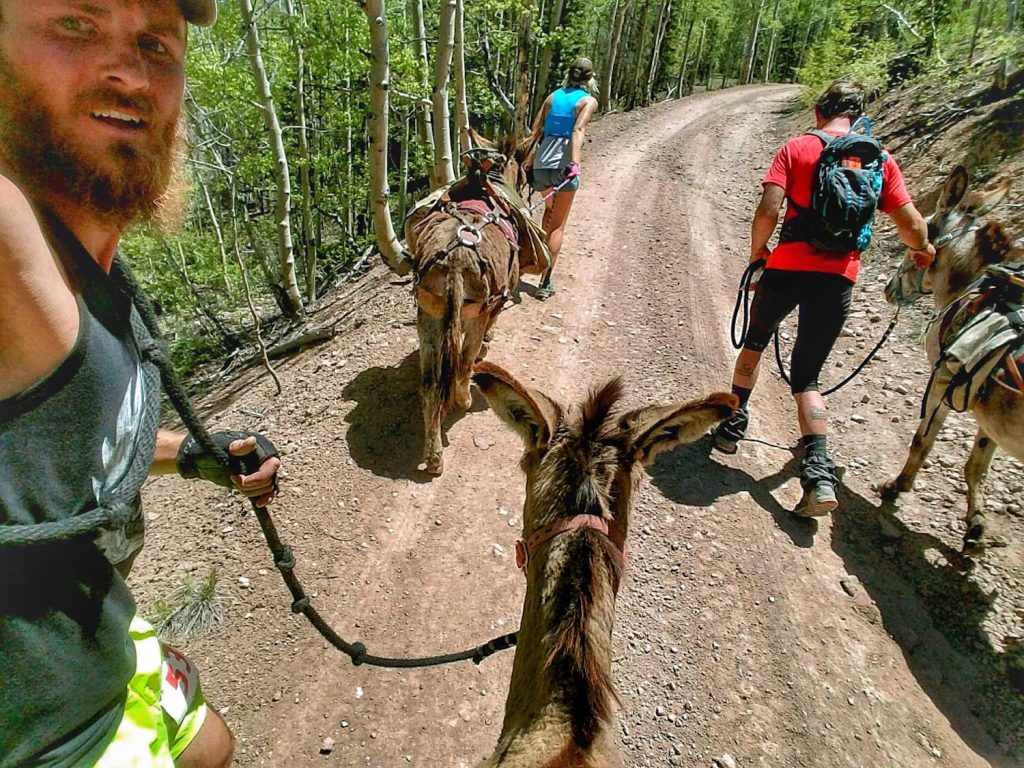
Photo courtesy of Morgan Sjogren
As we crest the top of the climb, I feel my heart ticking like the wheels of a roller coaster at that moment before your stomach drops. Neil yells from behind, “Grab Alice by her holster on her jaw for control on the steep sections.” For safety, it’s also essential to stay ahead of your donkey on the downhill. Alice and I pound down the pass at a 7-minute-mile pace, no problem, picking the best lines while barreling down the rocky mountain road. We leave the pack of jackasses (male donkeys) in our dust. As we inch closer and closer to Black Pitch, my confidence grows. If I could keep my Wrangler from rolling on the cliff, Alice and I were certainly not going down either.
Looking down the road, I spot the two pros and their mini donkeys nearly a mile ahead. My mind races back to the moment I switched the Jeep into gear, the tipping point. My adrenaline regains that same high and as I shift into the zone of pure focus, Jefferson Airplane’s melody plays in my head.
…Call Alice when she was just small
When the men on the chessboard
Get up and tell you where to go…
“Come on Alice. Move your ass. It’s game time!” I spur Alice on as I drop the pace to under 6 minutes per mile. The gap grows closer, and I leave the terrifying memories of this road behind.
The winners are measured, not by runners, but by donkey noses crossing the finish line.
The pack grows to four humans and four donkeys as we enter Creede and narrow in on the leaders. None of us is sure exactly where the finish line is, but we unanimously decide to race until we return to the start line. Main Street is lined with hundreds of fans cheering us on. The pace quickens with the anticipation of a close sprint finish. Alice and I are surrounded by middle-aged men attached to their burros with lassos yelling, “Hup! Hup! Hah! Hah! Faster, ass, faster!”
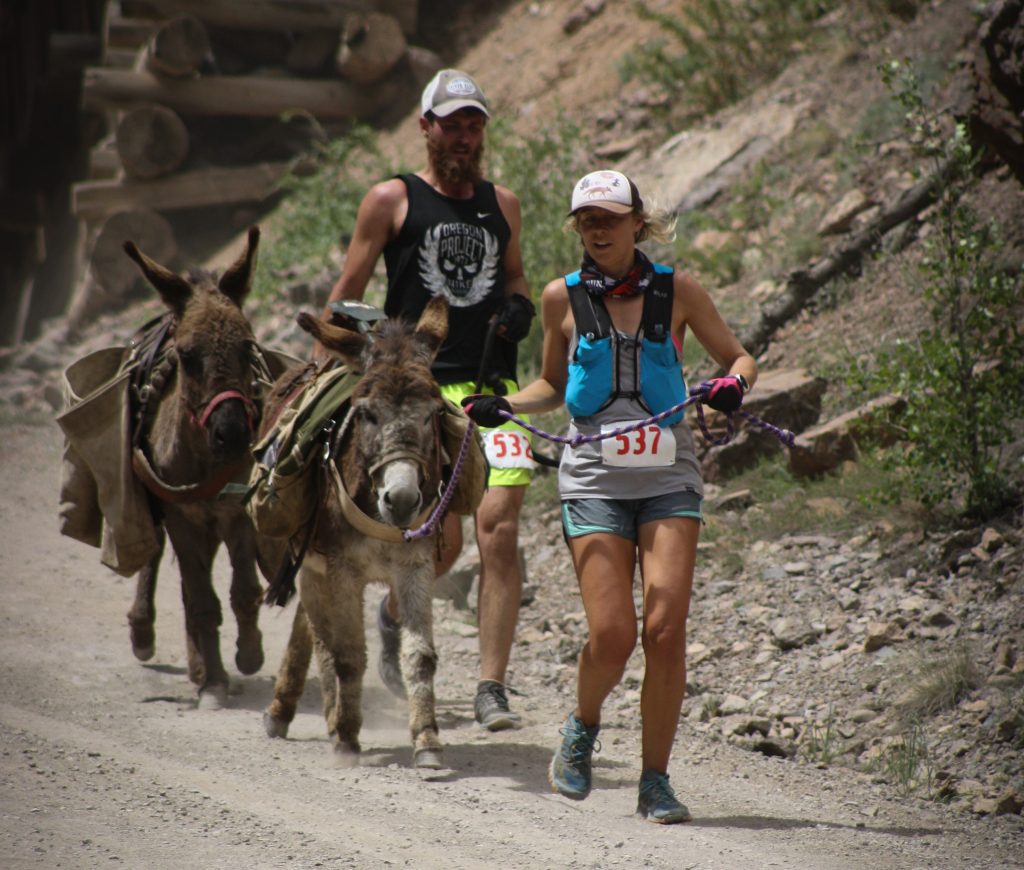
Photo: Jennifer Mewes
A few strides before the finish, Alice ties up ever so slightly and lets one of the jackasses pass us at the line. (The winners are measured, not by runners, but by donkey noses crossing the finish line.) Chris gets the win and I’m sure it will make his donkey-racing legend Grandma Roma proud. The race directors hand out numbered popsicle sticks. I receive number two, but this doesn’t go unnoticed by one of the super serious pros who says, “Hey, this is bullshit. We beat them. We’re second!” He hollers and pounds on his chest, looking over at me. I hand him my stick and take number three. This race was more about the experience than the popsicle stick for Alice and me anyway.
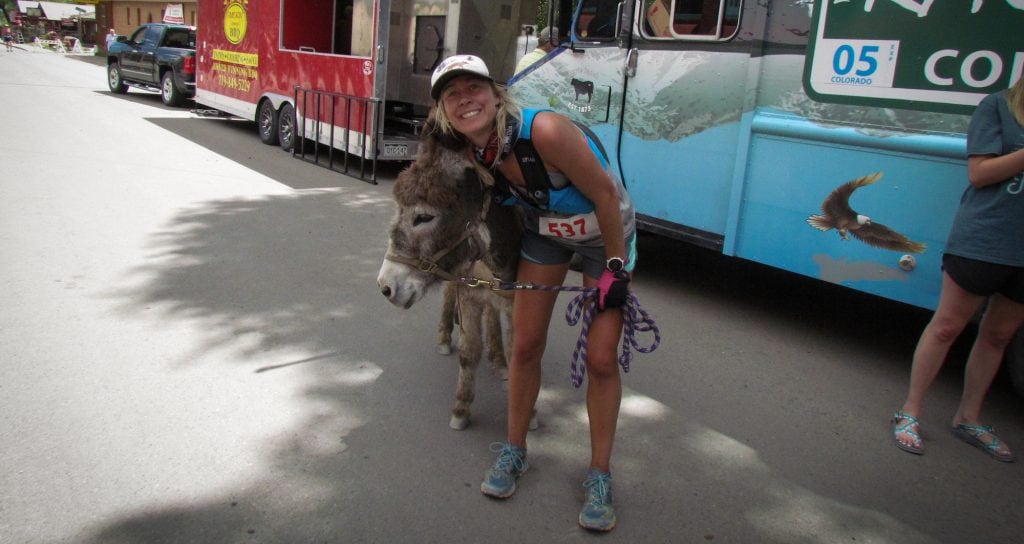
Photo: Bailey Wann
The race directors approach me. “Oh my God, that was amazing,” one says. I scratch my head, figuring my elite racing background qualified me as a contender. “We didn’t think you could pull this off! Heck, we were worried as hell about you.
“Even Olympians have tried donkey racing and failed. Being a fast runner is the smallest part of the equation—you have to be a good handler, a true ass whisperer, and you need to be fearless.”
I feel immense pride. I don’t know that I’m next in line for the Donkey Dynasty, but I left Creede without any doubts about how I want to live my life: dancing the nights away and running wild and fearless.
Comments
Post a Comment